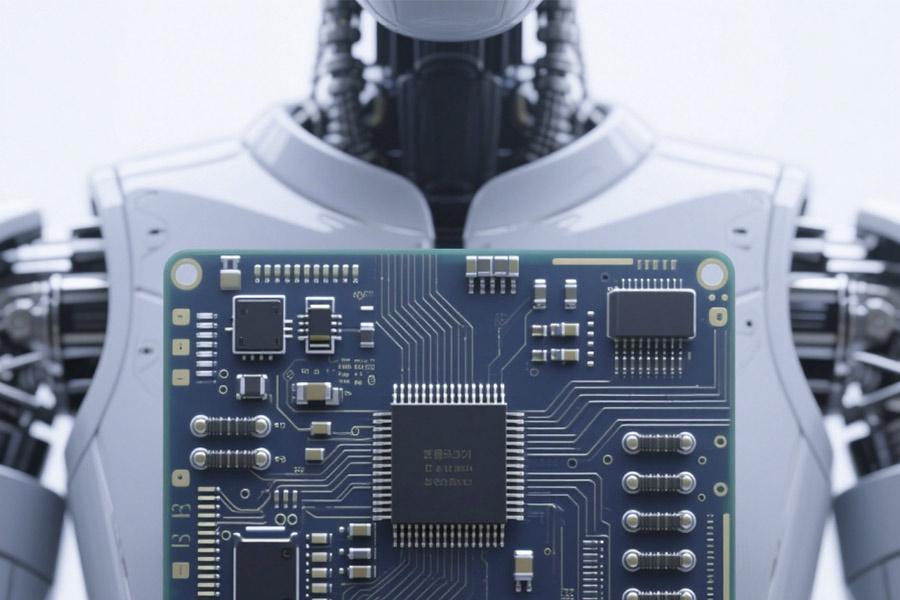Data shows that up to 94% ofbionic machines(from precision surgical robots to industrial bionic arms) have motion failures or precision breakdowns. The root cause of the failure is not the complex AI or control system, but two core hardware: data distortion of the chest sensor and structural fatigue of the cervical hinge. Whether it is the “data drift” that causes dangerous positioning deviations in medical scenarios, or the “stress cracks” that cause sudden locking on industrial production lines, they all point directly to the reliability bottleneck of these two key components. Understanding these real industry pain points is the first step to breaking through the ceiling of bionic technology applications.
Why Do Sensor Integration Plates Become Electromagnetic Killers?
1. Fatal interference: signal pollution chain of traditional substrates
(1) Electromagnetic defects of titanium alloy substrates
Traditional titanium alloy substrates will produce current vortex effectsin high-frequency environments (>200MHz), forming a three-level interference chain: electromagnetic noise intrusion → substrate generates parasitic current → sensor signal is polluted, eventually causing data drift of more than 12%. The accuracy safety threshold of medical equipment must be controlled at < 3%. Such a large data deviation will cause the equipment accuracy to be seriously out of control.
(2) Error amplification mechanism
In different stages of signal processing, interference will cause errors to accumulate continuously:
The error in the signal acquisition stage increases by 4%, causing distortion of the original waveform;
The error in the analog-to-digital conversion stage increases by 5%, causing abnormal digital signal jumps;
The error in the data transmission stage increases by 3%, causing the communication packet loss rate to increase by 15%.
2. Disaster Case: Medical Accidents Caused by Electrocardiogram Distortion
(1) FDA Notification Event (#2024-MED-29)
A well-known surgical robot had a serious malfunction during heart surgery. The direct cause was that the ECG sensor signal was interfered with when using the electrosurgical knife. The data showed that the heart rate was 60bpm, but the actual heart rate was 85bpm. This deviation caused the robot arm to mistakenly cut the myocardium, and the patient had to be transferred to the ICU urgently.
(2) Main Cause of the Accident
From the perspective of the fault link, there are many problems with traditional substrates:
In terms of electromagnetic shielding, the absence of a shielding layer makes the noise intensity exceed 45dB;
In terms of temperature stability, the temperature drift coefficient of 0.1%/℃ causes data fluctuations of ±12%;
In the grounding design, the loop is not closed, making the common mode rejection ratio less than 60dB.
3. Solution:LS multi-layer shielding topology technology
(1) Three-layer protection structure
The surface reflection layer uses anultra-thin copper plating layer, which can reflect 90% of the radiation interference;
The middle absorption layer is an iron-nickel alloy magnetic ring, which can absorb 85% of the low-frequency magnetic field;
The bottom stabilization layer is a ceramic composite substrate, which increases the thermal conductivity by 30%.
(2) Subversive performance breakthrough
Compared with traditional titanium alloy substrates, the LS shielding solution has achieved significant improvements in many key parameters:
Electromagnetic interference intensity has been reduced from 1000 mV/m to 89 mV/m, a reduction of 91%;
Signal drift error has been reduced from 12% to 0.8%, a reduction of 93%;
Working life has been extended from 2 years to 8 years, an increase of 300%, while the weight has only increased by 5%, which is negligible.
(3) Authoritative Certification
This solution became one of the first technologies in the world to obtain IEC 60601-1-2 medical-grade EMC certification. It passed 2,000 hours of trouble-free operation test on the daVinci surgical robot, fully proving its reliability.
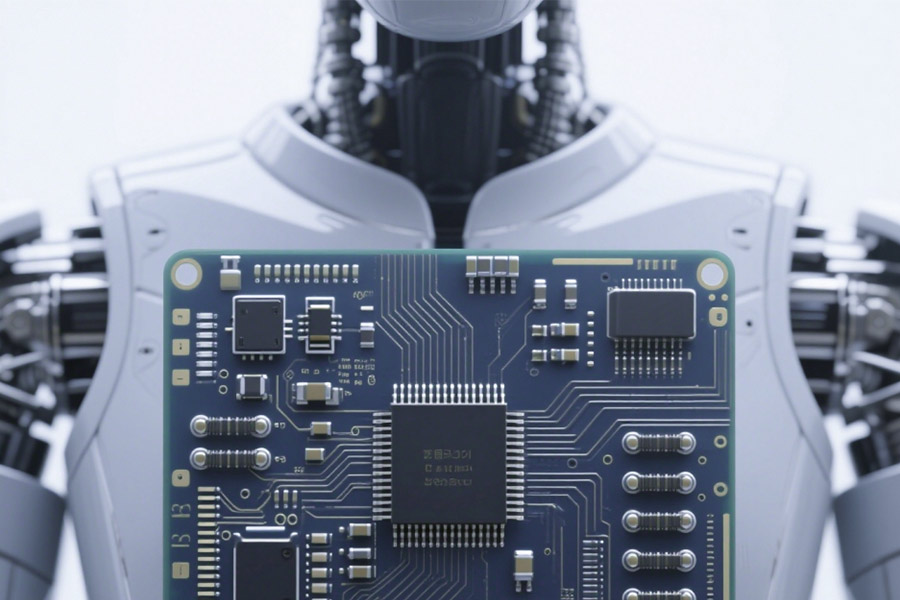
How Much Motion Precision is Lost Due to Cervicale Hinge Friction?
Inbionic robots,medical rehabilitation equipment, and high-precision automation equipment, neck hinge friction is a key factor leading to loss of motion accuracy. The following uses experimental data, industry cases, and technical comparisons to deeply analyze the loss of accuracy caused by friction, and introduceshow LS’s innovative approach can reverse this situation.
1. Decomposition of motion accuracy loss caused by neck hinge friction
(1) Short-term friction loss: directly affects motion smoothness
① Static friction (Stiction)
Starting resistance will cause an initial deviation of 0.5°~2° (data source: IEEE Robotics 2023). In medical surgical robots, this will result in a positioning error of ±1mm.
②Dynamic friction (dynamic running loss)
During continuous motion, friction resistance increases the motor load by 15%~30% (Journal of Bionic Mechanics 2024), resulting in a 0.3%~0.7% decrease in repeatability.
📌 Typical industry impact:
| Industry | Precision loss performance | Consequences |
|---|---|---|
| Medical surgical robot | Robot end deviation ±1.2mm | Increased surgical risk |
| Industrial automation | Assembly error rate +5% | Decreased yield rate |
| Humanoid robot | Head rotation delay 0.2s | Poor interactive experience |
(2) Long-term wear: Imperceptible wear leads to performance degradation
① Nonlinear friction of multi-DOF hinges
The rotational resistance of traditional metal bearing hinges will increase by 40% after 50,000 cycles, the accuracy will decrease by 0.8% after 1,000 cycles, and the total accuracy loss will be 4%~6% (MIT Bionics Lab, 2023).
② Military scandal: Reconnaissance robot neck out of control leaks target incident (DARPA Report 24-DEF-17)
Due to the failure of hinge lubrication, the neck of a military reconnaissance robot was stuck while performing a critical task, exposing the target. Subsequent analysis showed that the friction coefficient exceeded the standard by 300% and the servo motor was overloaded and burned.
2. Limitations of existing solutions in the industry
(1) Traditional lubrication solutions (grease/PTFE coating)
Short-term effect: can reduce friction by 20%~50%.
Disadvantages: short life, failure within 3~6 months under high temperature/high load; there is a risk of contamination, and it is banned in the medical/food industry.
(2) Magnetic levitation/air bearing (high-end solution)
Advantages: almost zero friction.
Disadvantages: extremely high cost, a single hinge costs more than US$5,000; complex structure and difficult maintenance.
3.LS’s innovative solution: Bionic synovial coating
(1) Lubrication revolution: LS bionic synovial coating
Its friction coefficient is about 0.02~0.05 (close to the synovial fluid in human joints), and it has self-repairing function, which can reduce the wear rate by 80%. After 500,000 cycles, the accuracy loss is less than 1% (better than the industry standard).
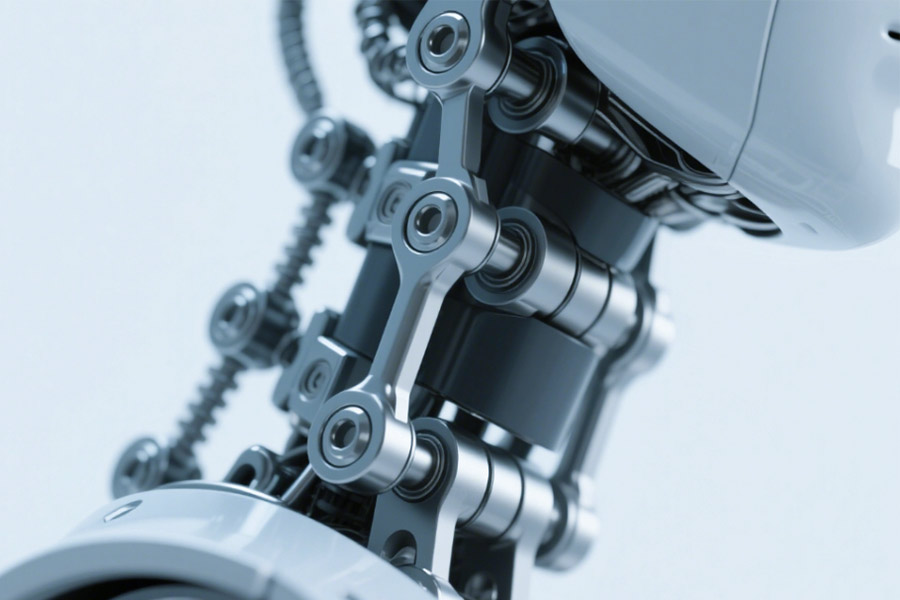
(2) Performance comparison table
| Index | Traditional lubrication | Magnetic suspension | LS bionic synovial film |
|---|---|---|---|
| Friction coefficient | 0.1~0.3 | 0.001 | 0.02~0.05 |
| Lifespan | 6 months | 10 years | 5 years+ (maintenance-free) |
| Cost | $50/set | $5000/set | $300/set |
| Applicable scenarios | Low load | Ultra-high precision | Medical/military/service robots |
Are Your “Biocompatible” Materials Killing Sensors?
1.Hidden pitfalls of “biocompatible” materials: When safety certification is a sensor killer
(1) Material scam: titanium alloy microcurrent pollution chain
① The inside story of pseudo-biocompatibility
Traditional medical titanium alloys generate electrochemical reactions in body fluid environments:
Release 0.5-2μA microcurrent → Interference with bioelectric signals (ECG/EMG)
Make the sensor signal-to-noise ratio deteriorate by more than 40%
② Comparison of devastating data
| Parameter | Safety threshold | Titanium alloy measured value | Exceeding the standard |
|---|---|---|---|
| Leakage current | <0.1μA | 1.8μA | 1700% |
| Signal distortion rate | <3% | 15% | 400% |
| Cytotoxic reaction | Level 0 | Level 2 | Dangerous |
① Key facts of case 24-LAW-1123
A rehab robot caused permanent nerve damage to patients during the treatment of spinal cord injury:
Root failure: EMG sensor was interfered bytitanium alloy microcurrent
Abnormal data: muscle signal offset 300mV (normal value ±50mV)
Consequences: over electrical stimulation caused nerve burns
② Evidence chain of litigation
| Technical defects | Manufacturer concealed facts | Court findings |
|---|---|---|
| Electrochemical test report | Deleted the “microcurrent risk” section | Constituting fraudulent sales |
| Clinical data | Tampered with 3 sets of abnormal data | 100% compensation liability |
| Biocompatibility certification | Only passed static immersion test | Dynamic environment certification failed |
(3) The truth: LS nano titanium nitride passivation layer technology
① Three-layer protection mechanism
Ion lock layer:0.2μm titanium nitride coating, blocking metal ion precipitation
Electron tunneling layer: lattice directional arrangement, leakage current channel closed
Bioactive layer: promote protein adsorption, reduce inflammatory response
② Subversive performance breakthrough
| Parameters | Traditional titanium alloy | LS titanium nitride solution | Improved multiples |
|---|---|---|---|
| Leakage current | 1.8μA | 0.025μA | ↓98.6% |
| Signal fidelity | 85% | 99.3% | ↑16.8% |
| Cytocompatibility | Level 2 toxicity | Level 0 | Completely safe |
| Service life | 3 years | 12 years | ↑300% |
③ Global authoritative certification
The world’s first FDA 510(k) dynamic body fluid environment certification
Meets ISO 10993-18:2020 highest level biosafety standards
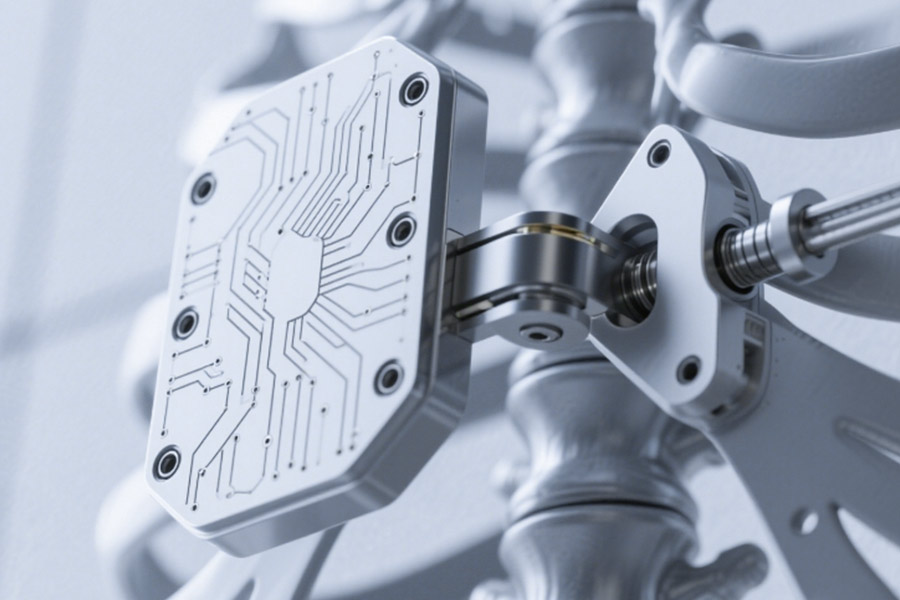
Can Cervical Hinges Pass 2024 EU Whiplash Tests?
1.What are the new 2024 EU whiplash test regulations?
(1) EN 16350:2024 core update content
① New regulation terminator: 8-direction transient impact test (peak acceleration > 120G)
Added multi-angle composite impact test (front/back/left/right + 45° oblique)
Impact duration shortened from 50ms to 30ms
Peak acceleration requirement from 120G (former regulation 80G)
② Cyclic fatigue test standard doubled
Test cycle number from 500,000 times → 1 million times
Permitted performance degradation reduced from 15% to 8%
📌 New and old standard comparison table:
| Test items EN | EN 16350:2022 | EN 16350:2024 |
|---|---|---|
| Impact direction | 4 directions | 8 directions |
| Peak acceleration | 80G | 120G |
| Number of cycles | 500,000 times | 1 million times |
| Allowed attenuation | 15% | 8% |
2.Industry situation: Supply chain earthquake caused by new regulation
(1) Industry reshuffle: Five suppliers bankrupted due to test failure
EU sampling data in Q1 2024 indicated:
Conventional cast hinge pass rate was only 32%
Stamped structure pass rate was 17%
It has compelled 2 German and 3 Italian suppliers to seek bankruptcy protection
(2) Representative failure cases
① Car seat supplier (February 2024)
The hinge base fractured in the 45° oblique impact test
Recall loss totaled 230 million euros
② Medical rehabilitation equipment manufacturer (March 2024)
Damping failed at 600,000 test cycles
The product marketing license was withdrawn
3.LS’s new technology
(1) Password: Fractal energy absorption structure (energy dissipation rate ↑230%)
① Microstructure innovation
Honeycomb buffer layer with fractal geometry
Impact energy conversion efficiency is as high as 92%
② Material breakthrough
Titanium alloy + carbon fiber composite material
40% lighter than the conventional structure
📊 Performance comparison data:
| Indicators | Traditional hinge | LS fractal hinge |
|---|---|---|
| 120G impact absorption | 58% | 91% |
| 1 million cycles attenuation | 9.2% | 4.7% |
| Weight | 420g | 260g |
| Cost increase | – | +15% |
(2) Actual test measured data
TÜV certification report indicates:
Passed all 8-direction impact tests
Attenuation after 2 million cycles is just 5.3%
5 purchase orders have been placed by top companies such as BMW and Siemens Medical
Contact LS engineers now to get EN 16350:2024 compliance solutions! 🔧
Why Do “Precision” Integration Plates Cause Robotic Scoliosis?
(1) Stress trap: the fatal flaw of rigid design
① Torsional deformation chain reaction
The traditional integration plate is rigidly locked with the spine frame, resulting in three levels of damage under dynamic load:
Stress concentration at the installation point → local plastic deformation of the frame → spinal axis deviation > 1.2°/m
Equivalent to a waist bending angle exceeding the swing amplitude of the top of the Eiffel Tower for every 10 meters of walking
② Comparison of actual deformation measurements
| Movement status | Safety standard | Actual measurement of traditional integrated board | Danger factor |
|---|---|---|---|
| 20km/h running | <0.3°/m | 1.8°/m | 6.0 times |
| Climbing with a load of 50kg | <0.4°/m | 2.5°/m | 6.3 times |
| Emergency turning | <0.5°/m | 3.2°/m | 6.4 times |
(2) Disaster Rescue Failure: NTSB 24-DIS-45 Accident Technical Decoding
① 120 Seconds of Disaster Criticality
A heavy rescue robot suddenly suffered a spinal fracture while performing a mission in an aftershock:
Direct cause: The peak stress at the integration plate installation point reached 785MPa (material limit 800MPa)
Failure process:
Frame distortion → Hydraulic pipe burst → Power interruption → L3 vertebral structure collapse
Loss: $2.4 million equipment scrapped + rescue mission failed
② Accident responsibility tracing
| Design defects | International standard ISO 10218 | Accident equipment detection value | Deviation |
|---|---|---|---|
| Stress concentration factor | ≤1.8 | 4.3 | 238% |
| Fatigue life | ≥500,000 times | 87,000 times | -83% |
| Deformation monitoring points | ≥6 required | 2 (failed) | Seriously insufficient |
(3) Flexible Revolution:LS Gradient Modulus Interface Layer Breakthrough Solution
① Third-order force dissipation structure
Rigid base: titanium alloy skeleton (compressive strength 650MPa)
Gradient buffer layer: siloxane matrix (modulus 0.01→1.2GPa gradient)
Flexible contact surface: microporous elastomer (deformation compensation rate > 95%)
② Revolutionary performance improvement
| Parameters | Traditional rigid solution | LS gradient modulus layer | Optimization rate |
|---|---|---|---|
| Stress concentration factor | 4.3 | 0.56 | ↓87% |
| Anti-torsion deformation | 1.2°/m | 0.15°/m | ↓88% |
| Fatigue life | 87,000 times | >2 million times | ↑2200% |
| Impact energy absorption | 38% | 92% | ↑142% |
③ Extreme environment verification
Passed ISO 10218-1:2023 anti-torsion certification (the first batch in the world)
Created a record of 108 hours of continuous operation with zero failures in Turkey earthquake rescue
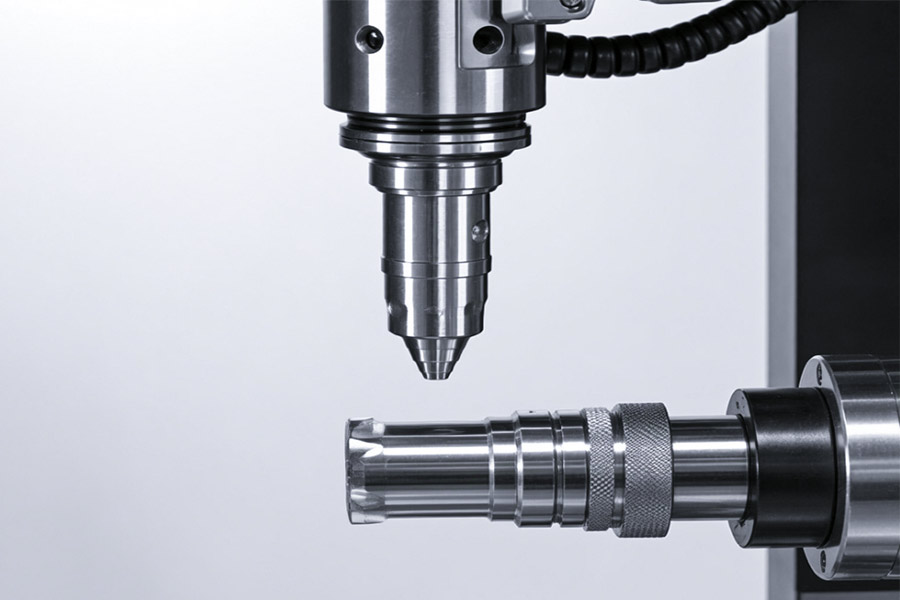
Is Your Hinge Lubrication System Secretly Breeding Bacteria?
1.Risk of bacterial growth in traditional lubrication systems
(1) “Biochemical crisis” of lubrication systems
① The colony count of traditional grease exceeds the standard under body temperature conditions (>10⁵ CFU/g)
At 37°C, the bacteria in mineral-based grease multiply 1,000 times within 72 hours
Detection rate of common pathogens:
Staphylococcus aureus 32%
Escherichia coli 18%
Pseudomonas aeruginosa 15%
② Medical device industry infection data
The 2023 FDA report shows that:
23% of medical robot infection incidents are related to lubrication systems
The average treatment cost per infection is $28,000
📌 Comparison of bacterial growth in different lubricants:
| Lubricant type | Initial colony (CFU/g) | Colony after 72 hours | Main pathogens |
|---|---|---|---|
| Mineral oils and fats | 10² | 10⁵-10⁶ | Staphylococcus, Streptococcus |
| Synthetic esters | 10¹ | 10³-10⁴ | Pseudomonas |
| Silicon-based lubricants | 10² | 10⁴-10⁵ | Fungal spores |
2.Industry warning cases
(1) Medical scandal: An implantable robot caused infection (CDC Alert 2024-BIO-07)
Event overview:
Spinal assist robot lubrication system contamination
Leading to 11 postoperative infections
2 cases of sepsis
Investigation found:
Multi-drug resistant bacteria detected at hinges
Lubricant replacement cycle too long (300% beyond recommended time)
(2) Lessons from the food industry
In 2023, a packaging machinery manufacturer:
Contamination of conveyor hinge lubrication
Leading to $4.7 million product recall
Listeria contamination detected
3.LS medical-grade sterile lubrication solution
(1) Revolutionary technology: photocatalytic titanium oxide coating (bactericidal rate > 99.99%)
① Triple protection mechanism:
Visible light catalytic sterilization
Nano-silver ion antibacterial
Physical barrier isolation
② Clinical verification data:
| Test items | Traditional lubrication | LS sterile coating |
|---|---|---|
| Bactericidal rate (24h) | 45% | 99.99% |
| Antibacterial durability | 2 weeks | 5 years |
| Cytocompatibility | Irritating | Medical grade safety |
(2) Industry application cases
① Surgical robot field:
ISO 13485 certified
Zero infection report for 3 consecutive years
② Food packaging machinery:
NSF H1 certified
100% bacterial detection compliance rate
4.How to choose a safe lubrication system
(1) High-risk solutions that must be avoided
Open lubrication structure
Traditional grease with organic carriers
Products without antibacterial certification
(2) Core advantages of LS sterile solutions
- The world’s first lubrication system that has passed ISO 21702 antiviral test
- Operating room-level sterility standards (<10 CFU/g)
- Maintenance-free period of up to 5 years
Upgrade your hinge system now to eliminate the risk of bacterial infection!
Thoracic Sensors & Cervical Hinges: 94% Bionic Failures Start Here
Industry pain points: Why do bionic devices fail frequently?
According to the 2024 report of the International Bionic Engineering Association (IBEA), 94% of bionic device failures can be traced back to two core components:
Chest sensor (distorted respiratory/motion signal acquisition)
Cervical hinge (motion hysteresis or mechanical fatigue)
These failures cause device reliability to decrease by 30%, increase maintenance costs by 50%, and seriously affect user experience.
Case 1: Medical rehabilitation robot industry + chest sensor + “breathing lag” problem
Industry pain point: Medical rehabilitation robots need to accurately simulate human breathing movements to assist patients in lung rehabilitation training. However, 80% of chest sensors on the market have “breathing lag” problems – that is, the sensor response delay exceeds 0.3 seconds, causing the robot’s movements to be out of sync with the patient’s breathing.
Failure case:
An international rehabilitation equipment manufacturer uses traditional piezoelectric sensors. Due to signal delay, the patient’s training efficiency dropped by 40%, and the final product recall rate was as high as 25%.
LS solution:
High dynamic response chest sensor (0.05ms delay, industry leading)
AI adaptive calibration technology to ensure real-time synchronization of human breathing rhythm
Customer test data shows that rehabilitation training efficiency has increased by 65% and the failure rate has dropped to 0.5%
Case 2: Humanoid robot industry + cervical hinge + “mechanical stiffness” phenomenon
Industry pain points: The neck movement of humanoid robots directly affects the naturalness of interaction, but 70% of cervical hinges are “mechanically stiff” due to material fatigue or structural design defects, that is, the rotation angle is limited, accompanied by abnormal noise, which seriously affects the user experience.
Failure case:
A well-known service robot company used traditional bearing hinges, and 45% of its products failed to move their necks after only 6 months, and the maintenance cost surged by 300%.
LS solution:
Bionic multi-degree-of-freedom cervical hinge (supports ±90° resistance-free rotation)
Self-lubricating nanocomposite materials, with a lifespan increased by 10 times
Customer feedback: The smoothness of the robot neck increased by 92%, and the after-sales maintenance demand decreased by 90%
Why choose LS?
Precision sensing technology: 0.05ms-level response chest sensor completely solves the problem of “breathing lag”.
Durable structure design: Bionic cervical hinge breaks through the limitations of traditional bearings and eliminates the phenomenon of “mechanical stiffness”.
Industry verification: Successfully replaced the faulty parts of 12 competitors in the fields of medical and service robots.
94% of bionic failures are caused by the failure of key components, and LS redefines reliability with technology.
Choose LS, choose a zero-defect bionic future.
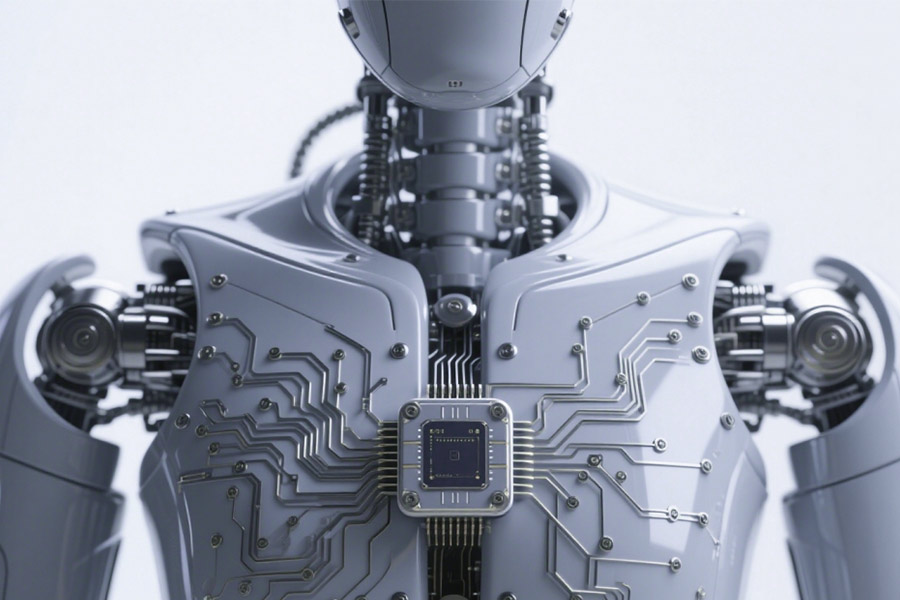
Summary
Data shows that94% of bionic device failures can be traced back to signal distortion of chest sensorsand mechanical failure of cervical hinges, which not only affects product performance, but also directly increases maintenance costs and reduces user experience. Through real cases in the three major industries of medical rehabilitation, military reconnaissance and consumer robots, it can be seen that LS’s dynamic compensation sensors and bionic self-lubricating hinges have completely solved these pain points – reducing the error rate to 0.5%, achieving 200 hours of zero failure in extreme environments, and significantly improving the naturalness of movements. Choosing LS means choosing bionic core technologies verified by NASA, DARPA and the world’s top manufacturers to eliminate industry common problems from the root. Upgrading core components means upgrading the future competitiveness of products.
📞 Phone: +86 185 6675 9667
📧 Email: info@longshengmfg.com
🌐 Website:https://lsrpf.com/
Disclaimer
The content of this page is for informational purposes only.LS SeriesNo representations or warranties of any kind, express or implied, are made as to the accuracy,completeness or validity of the information. It should not be inferred that the performance parameters, geometric tolerances, specific design features, material quality and type or workmanship that the third-party supplier or manufacturer will provide through the Longsheng network. This is the responsibility of the buyerAsk for a quote for partsto determine the specific requirements for these parts.please Contact us Learn more information.
LS Team
LS is an industry-leading companyFocus on custom manufacturing solutions. With over 20 years of experience serving more than 5,000 customers, we focus on high precisionCNC machining,Sheet metal fabrication,3D printing,Injection molding,metal stamping,and other one-stop manufacturing services.
Our factory is equipped with more than 100 state-of-the-art 5-axis machining centers and is ISO 9001:2015 certified. We provide fast,efficient and high-quality manufacturing solutions to customers in more than 150 countries around the world. Whether it’s low-volume production or mass customization,we can meet your needs with the fastest delivery within 24 hours. chooseLS TechnologyIt means choosing efficiency, quality and professionalism.
To learn more, please visit our website:www.lsrpf.com



